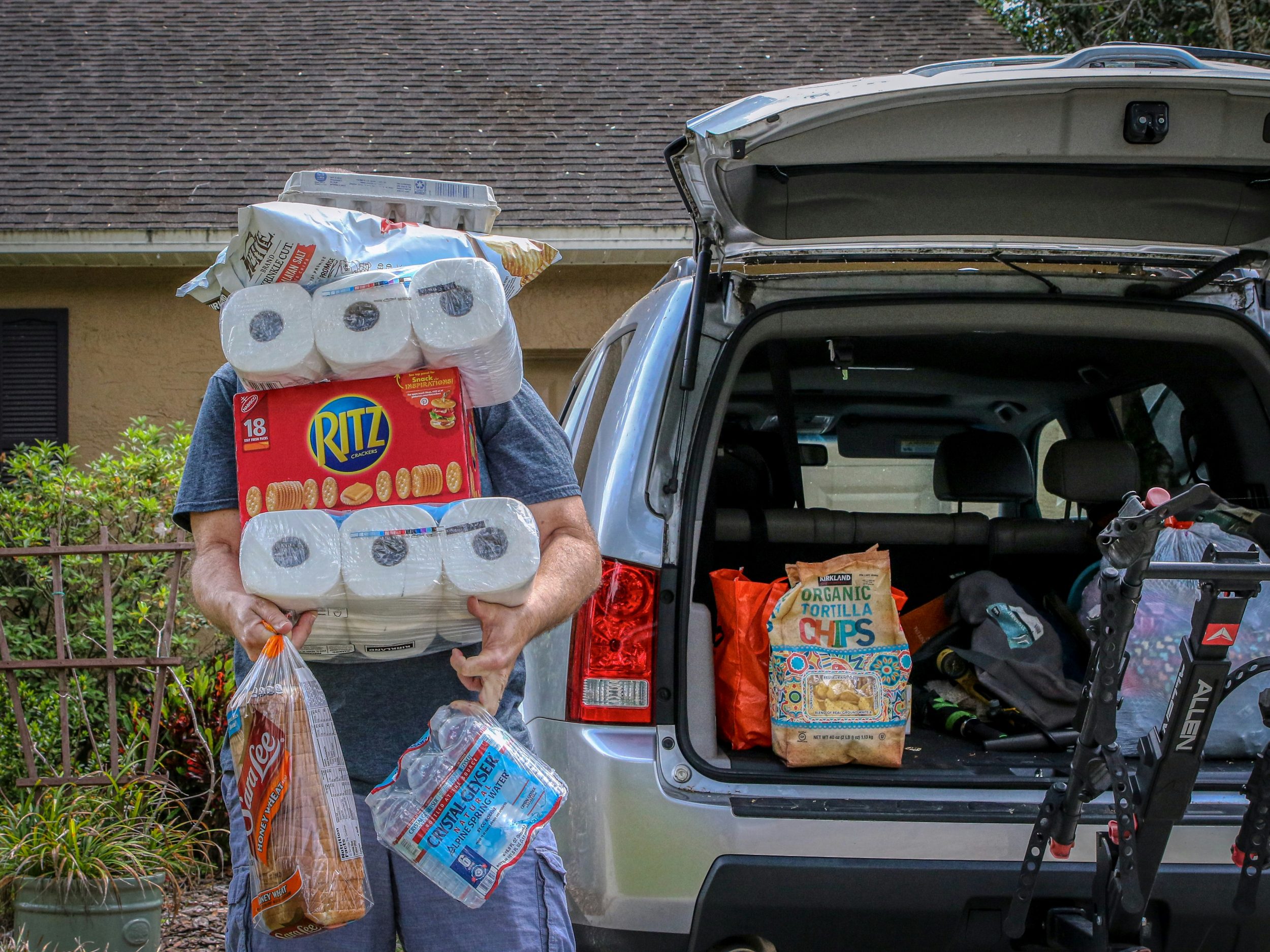Hoarding disorder is a commonly misunderstood disorder, as it is not simply a habit of accumulating a high number of objects. While some people really enjoy the act of collecting items such as stamps, books, and cards, hoarding is a complex mental health condition that involves intense emotional attachment to items that may or may not hold value. Individuals are unable to throw away items that have no use, and it can impede on their ability to live and function properly. Hoarding behaviors can create extremely cramped and unsafe living environments as more and more clutter accumulates. Countertops, desks, drawers, stairways, and major living areas of the home may be used to store a huge number of items, and it can prevent areas of the home from being used for their intended purpose. In this blog, we will discuss the intricacies of hoarding disorder, going through its symptoms, causes, and impacts to those who suffer from it.
What is hoarding?
Hoarding disorder is defined by the DSM-5 as a mental health disorder in which a person holds onto a large number of items that may or may not have monetary value.1 Hoarders have an extremely difficult time throwing away or parting with the possessions they have accumulated, and they may experience severe distress at the thought of getting rid of any of their items. It can create uncomfortable living situations as areas in the home become cramped. Hoarding disorder can range from mild symptoms to severe, with severe symptoms impacting the daily life of the individual and the close relationships around them. When individuals suffer from hoarding disorder, they may pull away from close friends or family due to shame surrounding their inability to let go of large amounts of clutter. Items that people tend to hoard include clothing, household items, magazines, and sometimes even animals.
Is hoarding related to obsessive-compulsive disorder?
To diagnose hoarding disorder, there are criteria in the Diagnostic and Statistical Manual of Mental Orders (DSM-5) that must be met. Currently, hoarding disorder is recognized as a distinct condition within the obsessive-compulsive (OCD) spectrum.1 In previous versions of the DSM, hoarding was classified as a subtype of OCD, but research into the condition determined that individuals with hoarding disorder do not necessarily have any other mental health diagnoses. Hoarding disorder is an isolated condition within the OCD spectrum, instead.
In order to diagnose hoarding disorder, there are four primary criteria that must be met:2
- An individual has a difficult time parting with possessions regardless of its value
- An individual has a perceived need to save objects
- An individual accumulates items to the point of significant clutter
- An individual’s behavior and/or clutter consumes time and causes significant impairment and distress in the individual’s life (school, work, or social life)
Hoarding vs. Cluttering
It is important to note that hoarding goes beyond cluttering. Individuals with hoarding disorder undergo a significant, intense emotional attachment to the things they collect. Meanwhile, a person who simply enjoys collecting items will typically focus on a certain type of object to collect. They only collect items that fit the criteria of what they are looking for, and organize it in a regimented way. Having a collection of something does not disrupt a person’s day to day life. However, those who hoard do not organize their items in an orderly fashion. As mentioned above, hoarders tend to hoard items that have little to no monetary value. They may begin collecting items due to sentimental value, beauty, or functionality; however, hoarding disorder manifests when people begin to feel increasingly emotional attachment toward objects.2 Eventually, individuals can reach a point where the sentimentality and beauty of their possessions are lost, and the emotional need to cling onto all their possessions overtakes their ability to throw away items and live comfortably.
Symptoms/Causes
Hoarding behaviors can become triggered by many different stressful or traumatic events. In a lot of cases, something like a divorce or death of a close loved one can kickstart hoarding behaviors. Apart from saving large quantities of items, other symptoms of hoarding disorder include:4
- Experiencing extreme levels of stress when trying to throw things away
- Inability to let go of possessions, regardless of their value
- Feeling unsure about where to put possessions
- Distrust of other people handling or touching objects
- Feeling anxiety about needing certain items in the future
- Living in unkempt spaces due to excess clutter
- Keeping too many items that are not in current need
- Feeling compelled to save everything, and feeling upset at the thought of getting rid of them
- Issues with organization and planning
- Withdrawal from friends and family
There are many reasons why a person might develop hoarding issues. They may believe that keeping items will be useful and valuable to their future; certain items may feel irreplaceable and unique; items may have been a ‘bargain’ to obtain; items hold memories of certain people or memories they want to keep; or maybe they simply do not know where to put the item and would rather keep it then make a decision about where to place it.
Prevalence of hoarding disorder
Currently, it is estimated that 2% – 6% of the population suffers from hoarding disorder. It seems to affect women and men at similar rates, and symptoms of the condition begin to appear during the earlier stages of life, typically before the age of 19.2,3 If left untreated, symptoms tend worsen with each passing decade and individuals with a hoarding problem are most likely meet the full criteria for being diagnosed with hoarding disorder by their mid 30s. In addition, symptoms of hoarding disorder are 3x more common in adults between the ages of 55-94 years old compared to younger adults between the ages of 34-44 years old.3
While the direct causes of hoarding disorder remain unknown, there are several risk factors that may contribute to its development. For example:
- Family medical history: Research has found a strong genetic component to hoarding disorder, with a higher prevalence of diagnoses among individuals with family members who hoard.
- Stress-inducing life events: Different types of trauma or loss, such as the death of a loved one or losing one’s home, can set off hoarding behaviors as a coping mechanism.
- Environmental factors: If an individual grows up in a cluttered and chaotic environment, it may normalize negative hoarding behaviors and increase the risk of developing hoarding disorder.
- Mental health conditions: Hoarding disorder can coexist with other mental health conditions, such as depression, anxiety disorder, attention-deficit/hyperactivity disorder or OCD. In fact, nearly 75% of people with hoarding disorder have a co-occuring mental illness, and 20% of people with hoarding disorder also have OCD.3,4
Treating hoarding disorder can be difficult
Hoarding behaviors start in early age and worsen over time as clutter builds up. Even as symptoms become more severe, however, hoarders try to keep their behavior private. They may avoid family and friends, and especially refuse to have guests over in the home. The secretive nature of hoarding makes it difficult for others to notice that there is a problem before it gets out of control. Recognizing hoarding behaviors early is beneficial as the complications of hoarding disorder are debilitating. Hoarding puts individuals at an increased risk for falls, being trapped by clutter, family conflict, loneliness, fire hazards, and even legal issues.4
When others catch onto a hoarder’s behaviors, it can still be extremely difficult to help them get intervention. This can be due to a number of factors: low motivation, large amounts of clutter accumulation, poor insight, and a difficulty in making changes to behaviors that have taken years and decades to solidify.2 Individuals who hoard are not very likely to become self-motivated and try to change their behaviors. Typically, it is a loved one who is concerned for the hoarder’s safety and wellbeing who encourages making changes. Hoarders tend to be secretive about their habits, and the thought of opening up their home and patterns to others feels shameful and embarrassing compared to some other types of OCD and anxiety disorders. In addition, the presence of comorbid mental health conditions can make it even trickier to treat individuals.
Treatment options
Though hoarding disorder can be challenging to treat, there are several approaches that can aid individuals in managing symptoms:
- Cognitive-behavioral therapy (CBT): CBT is one of the most common treatments for hoarding disorder. In therapy, individuals speak with a professional to understand the roots of their behavior and how to feel less anxious about throwing away clutter. Speaking with a professional can help individuals learn how to reduce acquiring behaviors and develop healthy decision-making skills when it comes to saving and discarding objects.2 In addition, CBT can help hoarder remove clutter from the home during in-home visits by a professional organizer or therapist.4 We discuss CBT in greater detail in our article “Cognitive Behavioral Therapy (CBT): What Is It?”
- Antidepressants: Medications, such as selective serotonin reuptake inhibitors (SSRIs), may prove beneficial to individuals with hoarding disorder and help alleviate symptoms of anxiety and depression commonly associated with the condition.
It is important to note that hoarding is a mental health condition, and not merely a case of laziness or lack of willpower. Accepting assistance from loved ones and professionals can be very intimidating and shameful for hoarders who have kept up these behaviors for decades and decades. Dealing with hoarding disorder can also be extremely traumatizing for loved ones, and they can also develop stress, depression, isolation, and grief as a result of another’s hoarding habits. Approaching hoarding disorder with caution and patience is crucial, and enables professionals to provide intervention to hoarders and their loved ones with success.
References:
-
https://my.clevelandclinic.org/health/diseases/17682-hoarding-disorder
-
https://adaa.org/understanding-anxiety/obsessive-compulsive-disorder-ocd/hoarding-basics
-
https://hoarding.iocdf.org/about-hoarding/who-gets-hoarding-disorder/#:~:text=It%20is%20estimated%20that%20around,and%20women%20at%20similar%20rates.
-
https://www.mayoclinic.org/diseases-conditions/hoarding-disorder/symptoms-causes/syc-20356056#:~:text=Hoarding%20disorder%20is%20an%20ongoing,regardless%20of%20their%20actual%20value.







